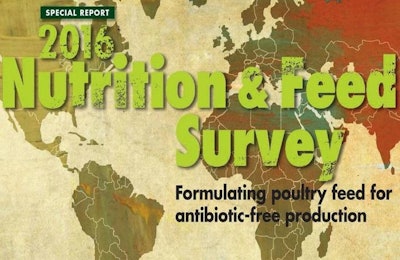
Exclusive Feed International report preview:
Compared with 2015, respondents to WATT Global Media’s annual Nutrition & Feed Survey had a fairly positive 2016 outlook, with 67 percent citing improving profitability or at least maintaining last year’s business. However, 40 percent of respondents have seen inclement conditions, such as exchange rate fluctuations; variable grain quality; and high ingredient and additive costs, continue to chip away at their profitability, mainly in Latin America, Asia and Africa.
Read the entire report and survey results in the June/July issue of Feed International.
Antimicrobial resistance, its potential ties to animal agriculture, and the push to eliminate its use for growth promotion are the primary focus of animal producers.
Given the threat of the widespread human health crisis posed by antimicrobial resistance, the use of antimicrobials in animal protein production is increasingly under public and government scrutiny. In the United States, for example, the National Research Council cites that animal agriculture consumes an estimated 80 percent of all antibiotics.
As the consumer rightfully becomes more concerned, major retailers and meat-producing companies are taking a proactive stance. For example, in less than 12 months, many major U.S. meat producers (Tyson, Perdue); restaurant chains (McDonalds, Subway) and retail chains (Costco) have vowed to eliminate the use of human antibiotics by the end of 2017. Such antibiotic-free professions will no doubt set the course for a sea change in public expectation.
Meanwhile, the world agriculture industry is coming to terms with the fact that it’s time to re-examine long-standing practices before they become mandated by regional – eventually, perhaps international – regulators.
The necessary production, management and formulation shifts required to even begin to address the overuse and elimination of antimicrobials from production weighed heavily on feed survey respondents. Fifty-eight percent of respondees consider the elimination of antibiotics in feed due to consumer pressure and/or government regulation as a critical obstacle to overcome in 2016.
The following data is also available in Feed International:
- Profitability outlook, 2011-16
- Percentage of antibiotic-free animal feed production
- Reaction to consumer pressure to reduce/eliminate AGPs in 2016
- Primary AGP-elimination challenges
- Additives used to replace AGPs
- Effectiveness of traditional AGP alternatives
- Feed enzyme usage
- Comparison of enzyme use 2015 vs. 2016
- Changes in feed enzyme usage during the past 12 months

















